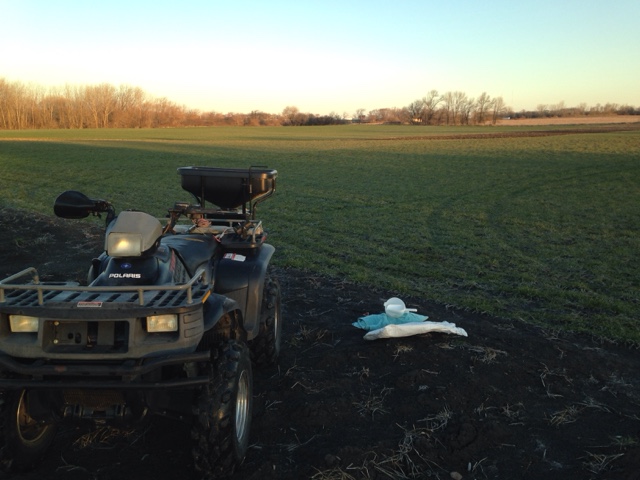Spring of 2016 got so warm, so fast that I was a little concerned that I would not get a chance to frost seed the Spring Street field. I really want to get a good stand of clover in this field so it can stay in clover for the Winter of 2016. We will not plant wheat into it until the Fall of 2017. Anyhow, I was finally relived when the forecast showed three night with a low of 27 degrees. The first night turned out to be a bust (no frost), but the second night went down to an honest 29 degrees. The seeds spreader gave me a bit of trouble but I still managed to the field just after sunrise. The below picture was taken at 7:16 am on March 20, the Spring equinox of 2016. I marked the field in 45 foot swaths and ran the spinner at full speed, and the seed sieve at the #2 position. This left a 10' wide strip on the East side, which I did with a slower spinner (think the #4 setting) but drove faster to keep it from spreading too heavy. I have calibrated the normal configuration to be 10 mph, 45' wide, #2 sieve opening equals 8 lbs/acre. This was a 3 acre parcel and I think I hit the numbers very well. I just hope the seed flew out well side to side. The electric motor was causing all kinds of trouble and will have to be replaced.
The below pic I shot the day before, when I measured and flagged the field. The field looks great.






























